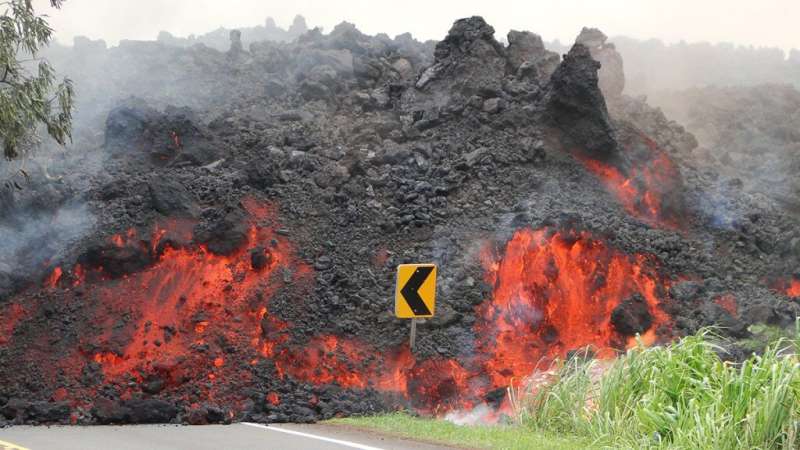Toward next‐generation lava flow forecasting: Development of a fast, physics‐based lava propagation model

When a volcanic eruption occurs in an inhabited area, rapid and accurate lava flow forecasts can save lives and reduce infrastructure and property losses. To ensure that current lava forecasting models can provide outputs fast enough to be useful in practice, they unfortunately must incorporate physical simplifications that limit their accuracy.
To aid evacuation plans, forecast models must predict a lava flow's speed, direction, and extent. These attributes are intimately connected to how the lava solidifies as it cools. Yet to achieve real-time speed, most current models assume that a flow has a uniform temperature. This is a major simplification that directly influences modeled rates of cooling; generally, lava flows are much cooler at their boundaries, where they are in contact with air or the ground, than they are internally.
Aiming to strike a better compromise between speed and realism, David Hyman and a team developed a 2D, physics-based lava flow model called Lava2d. They extended the traditional, vertically averaged treatment of a lava packet by considering it as three distinct regions: the portion near the lava-air boundary, the portion near the lava-ground boundary, and the fluidlike central core. The top and bottom regions of a modeled flow cool based on the physics of heat transfer to the air and ground, while the temperature in the center remains uniform, as in prior approaches. This setup enables the model to account for a temperature gradient without requiring a computationally expensive 3D approach.
To evaluate the technique, the authors applied Lava2d to three increasingly realistic scenarios: a hypothetical synthetic flow, a laboratory-created flow described in the literature, and a flow from a real-world eruption. They found good agreement between modeled and measured flow extent and speed for the laboratory flow, although the modeled surface temperatures of the flow were cooler than those that were measured, a discrepancy the authors attribute to the difficulty of modeling the experimental setup.
For the real-world test, the researchers configured the model with inputs based on the first few hours of the 1984 Mauna Loa eruption. They then simulated 12 hours of flow, comparing the modeled extent to the measured positions of the real flow at the end of the eruption. The model correctly identified the general morphology of the real-world flow, although the extents of various subflows were underpredicted or overpredicted.
The model's computational efficiency, however, was clear. The 12 hours of simulated flow were achieved in just 4.5 minutes of computation time. In a real-world forecasting scenario, that speed would enable an ensemble of model runs to be performed and averaged, the researchers note, which would help compensate for inaccuracies within individual runs. Their research is published in the Journal of Geophysical Research: Solid Earth.
More information: David M. R. Hyman et al, Toward Next‐Generation Lava Flow Forecasting: Development of a Fast, Physics‐Based Lava Propagation Model, Journal of Geophysical Research: Solid Earth (2022). DOI: 10.1029/2022JB024998
Journal information: Journal of Geophysical Research
Provided by American Geophysical Union
This story is republished courtesy of Eos, hosted by the American Geophysical Union. Read the original story here.



















